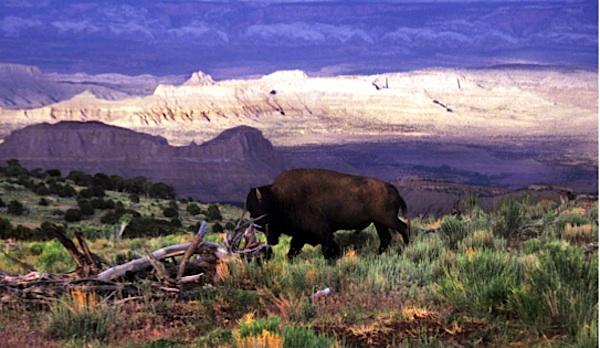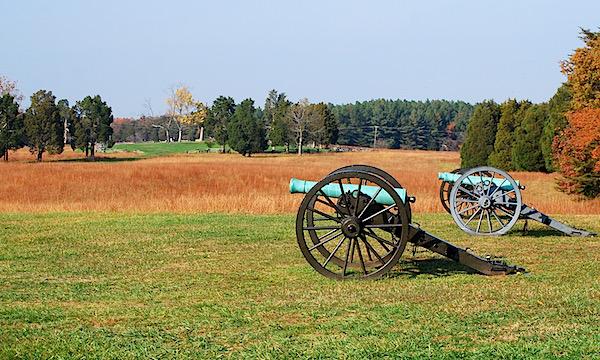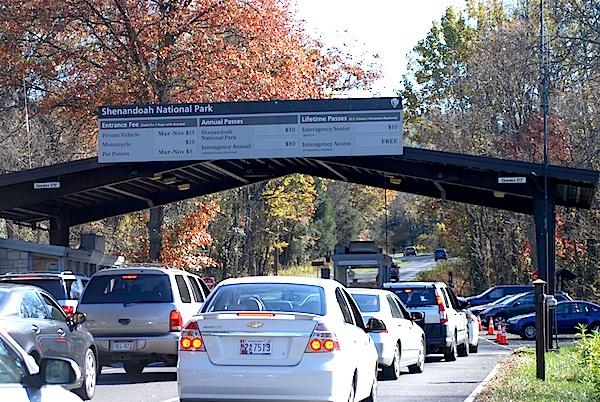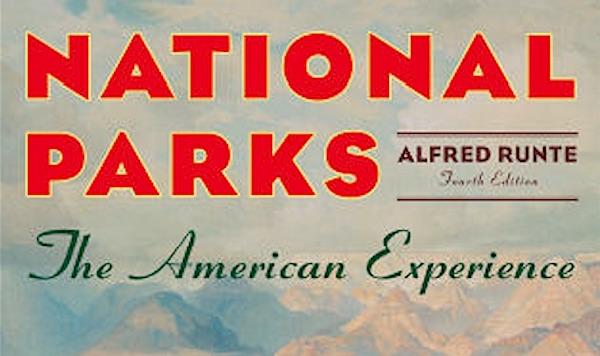
Heading into its centennial year, what must the National Park Service do to flourish?
Editor's note: Harry Butowsky spent more than three decades working for the National Park Service as an historian. He's worked for a handful of directors and seen much change in the agency. Understandably, he has an interesting perspective on the upcoming centennial of the National Park Service.
The National Park Service reminds me of a proud old ship sailing confidently across the North Atlantic. The captain is beaming and the passengers seem contented, at least, those traveling first class on the upper decks. It's below decks that the problems lurk. The crew is perhaps too easy going, believing the ship will always reach New York. However, the engines are old, the iron plating is thin, and the rivets are working loose. Granted, the Titanic is not a good analogy, since that ship was perfectly new. Otherwise, the analogy fits. The older things get'including institutions'the more they are in need of major repairs.
In the case of the National Park Service, the overhaul is long overdue. I spent my entire career in the History Division, which operates out of Washington, D.C. Some directors listened to the Division and others did not. Those that listened, I do believe, enjoyed smoother sailing in every division.
So, you will understand where I am coming from. I base my call for new backbone in the Park Service on good history. Only if the Park Service wants to tell a credible story can its centennial rise above mediocrity. My recommendations start with coming to grips with reality, and end with a call to historical arms.
This is my manual, if you will, for a great centennial, after which I invite you to offer your own. Just don't tell me that history is unimportant. In the Park Service, there is already enough of that myth going around.
Priority One: Address the Backlog
First, put this figure solidly in your mind'$11.5 billion. That's the backlog'the true funding shortage crippling all of our national parks. What is more, we can be sure that Congress is not likely to free up even a fraction of those needed funds. How can we be sure? Because the nation is $18 trillion in debt, with another $100 trillion in unfunded liabilities. At $4 trillion annually, the entire annual budget of the United States cannot possibly meet those backlogs. We have to address the Park Service backlog as part of that greater problem, or else nothing we suggest will make sense.
Instead, Park Service administrators have opted to act as if nothing is amiss. Committees have been formed; deals are being struck. It's as if the backlog did not exist.
Consider the blizzard of news releases announcing new directions for the agency. That's not an iceberg up ahead, folks. That's an opportunity to 'reach out.' Fine, but how will the reaching out be funded? If these new initiatives cannot be paid for, how can any of them be considered sincere?
Here's just one example: http://citiesspeak.org/2015/04/20/national-park-service-launches-nps-urban-agenda/ So it's an urban agenda now. But again, where is the funding? Urban, rural, or wilderness, how will these 'initiatives' be paid for? If the problem holding everything back is money, what good does it do to keep making promises that no one can possibly keep?
Priority Two: Make the Size of the National Park System Fit the Budget
Face it. There are just too many units in the National Park System for the money the Park Service has on hand. The country may want 407 units, but the agency cannot afford half that many. The proof again is all those news releases. That is what bureaucrats do when they lack solutions. They keep conjuring up new initiatives and programs, hoping that one will prove a 'hit.'
They hope then to take the 'hit' to Congress and ask for the money they don't have. Fine, but $11.5 billion? That will require more than an urban initiative, or a youth initiative, or a science initiative, or a deal with Budweiser. It will rather require convincing the United States Congress that 'eventually' will be too late. Preservation cannot run on 'eventually.' Those dollars are needed now.
Will the parks get those dollars? History says no. In Congress, waiting for money can turn into an eternity. Just ask Yellowstone in 1872. In 2016 and beyond, we need to face the reality of our current budgetary and staffing limitations. I say that means cutting parks.
What would be the magic number to cut? Actually, I would not cut a one. I would simply put those parks back where they belong'with the states, or even cities and counties, that should have been given the responsibility in the first place.
Before we do that, I hear some people screaming, we should raise the fees at the gate. That will work somewhat for the bigger parks, but not every park is as popular as Yellowstone or Grand Canyon. In the end, it still comes down to Congress and that $11.5 billion backlog. There is only so much money to go around.
Certainly, not every park needs to be a federal entity just because the states refuse to act. In the 1920s, the preservation of many desirable landscapes was confidently left to the states. To name just a few, look at the wonderful state-park systems in New York, Pennsylvania, Wisconsin, and California. Why is that not happening now? Because many states'and many environmentalists'think of the federal government as a bottomless pit. Just shake the money tree and write another news release. Park created and problem solved!

National battlefields and military parks such as Manassas (above) and Fredericksburg and Spotsylvania are prominent in the National Park System, but how many battlefields does the Park Service need?/Kurt Repanshek
Unfortunately, the problem only keeps worsening. How many battlefields do we need to interpret the Civil War, for example? There were 5,000 separate actions. Cannot some of the 'action' revert to the states? And parkways, How many of those do we need? While I personally use the George Washington Parkway, I am not convinced it needs to remain a national park.
Mount Vernon is not a national park. Does that in any way lessen its significance? Is not George Washington still a national figure? Then there is Steamtown, in Scranton, Pennsylvania. Sure, let's have a great park acknowledging railroad history, but why can't it managed by a state? Steamtown was blatantly intended to boost Scranton's local economy. Why should Uncle Sam be doing that?
And the urban parks. We all love open space. But why must the federal government be expected to fund them all?
Granted, it seems that government always has another pot of money. The problem is: It is always someone else's pot. No doubt, decommissioning just one aircraft carrier would fix the backlog, but that will never happen. American culture just doesn't work that way. That aircraft carrier employs people, too. We have to fix the number of parks within what Congress is willing to give the National Park Service, or Congress will not hear a word.
Priority Three: Establish Zero-Based Budgeting
Toward that end, the National Park Service needs to implement a zero-based budgeting system that will look at all of the regional and Washington, D.C., offices and programs. Does calling redundancy 'regional' make it right? Why can't every superintendent report to a leaner agency? But no, the staffing adjustments always come at the bottom, followed by a cry for more volunteers. Somewhere in that pile of news releases, I believe I saw that one. How can young people be expected take any 'initiative' on a salary of $10 a day? You want more 'minorities' to believe in the parks'and work in them? Then pay them an honest wage.
Priority Four: Put History Back in the Parks
None of this is of any surprise to historians. In various forms and guises, they have seen all of these problems before. This is to explain my pet peeve. It's actually misleading to create a 'historical' park. After all, every park comes with a history. Then let's see that visitors learn it, whether the park be Gettysburg or Yellowstone. The Park Service should start with every employee, including everyone working for the concessionaires. It's not just a job, folks. It's a calling. If you just want a job, McDonalds is hiring, and there should be plenty of openings at Burger King. In the parks, you work for generations yet unborn, and their legacy begins with your knowing that.
Start with your park's administrative history. You say your park doesn't have one? Then get an M.A. and write it as a thesis, or perhaps the dissertation for your Ph.D. Every park should have an up-to-date administrative history. How did we get this park? What is its mission? Where have we failed the public in the past? And believe me, we are always failing the public. That is what an administrative history is meant to correct for the future.
Nor should administrative histories be limited to individual parks. The system itself needs many such histories, broadly targeted to system issues. Can anyone doubt the importance of the role of concessionaires in park history? They have power. They have money. How does that influence the parks for good or ill? Where is the comprehensive history of the relationship between the National Park Service and the concessionaires? Here again, there is no such history, and some employee'with proper incentive from the agency'just might take the initiative to write it.
And fee policy. The last time the Service completed a history of that was in 1982. An update is long overdue. After all, fees now stay with the parks. Consider the 'backlog' again. Can it truly be erased just by changing the fee structure? We simply don't have enough history to guide us. We are still blindly looking forward without honestly looking back.

How far can higher fees go towards erasing the Park Service's maintenance backlog?/Kurt Repanshek
Nor does it end with fees and parks. Key documents such as the organizational charts and lists of all National Park Service Management personnel have not been updated since the late 1980s. See Organizational Structure of the National Park Service 1917 to 1985. Another key document, Historic Listing of National Park Service Officials.
And let us not forget the directors. At one time they were inclined to write useful and important books, or extensively shared their career findings with professional historians. The lessons a director learns are invaluable. The last to detail his experiences in a book was James Ridenour. The Service should commission a history of the management decisions and operational successes/failures of every director that ever served.
So, too, the National Park Service Thematic outline was last updated in 1987. Perhaps it is time for a new update. I am not referring to the 1994 thematic outline, but to the original thematic outline that dated back to 1929 when it was first conceived, History and Prehistory in the National Park System and the National Historic Landmarks Program.
If there is ever a commission charged with recommending the total number of parks which should be kept'and which should be transferred to state, local, or private authorities'this document will be needed. Better said, it will be essential.
Priority Five: An Educated Workforce
It is no wonder that rank-and-file members of the Park Service are drifting, too. An educated workforce is a confident workforce, but where are the materials supporting that education? Fortunately, there the future is somewhat brighter, thanks to historians from outside the agency. But again, employees must be given incentives to read their books.
Did I say books? You bet I did. Now that would be an 'initiative' capable of making a difference tomorrow morning'and without asking Congress for additional support.
Every employee needs to read those books. Of the six or seven books I would assign, one tops my list. That would be Alfred Runte's National Parks: The American Experience, the best book written on the national parks of all time. Think, then, of the thousands of employees in the Park Service who have never read it, including the current director of the National Park Service himself.
At least, if Director Jarvis has read it, he has never told me, or acted as if he did. A director who reads for effect would never be making the mistakes we see today. As one reviewer said of National Parks: The American Experience in an article for The Washington Post, 'At Interior, on Capitol Hill, and in the White House, National Parks is a must.'
A must does not mean a choice. Of course, some employees choose to read; my point is that all should made to read as a prerequisite for employment. My other titles would include:
1. The relevant administrative history'or its equivalent'of the employee's current park.
2. Alfred Runte, Yosemite: The Embattled Wilderness (Lincoln: University of Nebraska Press, 1990).
3. Lary M. Dilsaver, editor. America's National Park System: The Critical Documents. Lanham, MD: Rowman & Littlefield Publishers, 1997
4. Polly Welts Kaufman, National Parks and the Woman's Voice: A History. Albuquerque, NM: University of New Mexico Press, updated ed., 2006.
5. Horace M. Albright as told to Robert Cahn. The Birth of the National Park Service: The Founding Years, 1913-33. Salt Lake City: Howe Publications, 1985).
6. Richard West Sellars, Preserving Nature in the National Parks: A History New Haven: Yale University Press, 1997).
The Park Service should make it simple and provide these books on employment, with the appropriate 'testing' as each employee advances. A test? Yes again, a test. These are government jobs subject to Civil Service approval. And even the Director should not escape. The public deserves to know that the Service knows what it is managing. That backlog did not emerge just out of the blue.
Even without any ' new' history, we have a rich mother lode of information about our parks in both print and electronic format. This information represents the accumulated wealth and experience of generations of national park employees. I would like to see nothing better for 2016 than to make this heritage of information easily available to all. Much of it can be found now on the web but no one knows where to look or what to look for. Many capable and hardworking people are trying to correct the issue. Let us support them and get the job done.
Information that cannot be found is useless. So yes, add the National Parks Traveler to my list of must-have sources that every employee should know'and want'to follow.

The National Park Service needs to revive its commitment to history/Kurt Repanshek
Allow me to close by reminding everyone what a scholar does. In the National Park Service, we in the History Division kept our agency 'out of trouble' by keeping the director'and many others'fully informed. Our job was to make them 'look good' in the eyes of Congress, the president, and the public. I did that job with pride.
As proof of my comments above, look no further than what happened to the History e-library site after I retired. There has not been a single update in three years. Most of the existing links to online studies are broken and the site still claims 397 parks. Really, now?
The immense collection of National Park Service studies, reports, and information on this web site just collapsed due to lack of any support or attention. Why was a decade of taxpayer-supported effort not fully lost? Because, once I realized what was happening, I transferred all of the existing 3,500 studies to my personal web site and added a few thousand more. The material is still available, but not because the Park Service wanted it available. I did it as my personal contribution to history, and it didn't cost the taxpayers a dime.
You wonder why I get frustrated'and even angry? Because that is not how government'your National Park Service and mine'is supposed to work. The History Division is not some localized group of history buffs. Sure, we all get behind, but three years and a busted website? Now what? More things like 'Washington Slept Here?' History is what Washington and the country did. The National Park Service is America's face to the world, and all the History Division is allowed to do now is put lipstick on another news release.
How could anyone possibly blow the history of the National Park Service during its centennial, of all things? A good question, and here is how they are blowing it. Upper management has thrown history in the trashcan and still expects the nation to be inspired. Trading on the prestige of the agency, they then expect the public to go along.
In the past, that would not have happened. Even the crippling backlog, if not entirely erased, would certainly have been addressed. Nor would the cost-savings have come at the price of history. Here again, anyone can trot out the Organization of American Historians and say that the profession 'approves.' Well, the professional historians that matter do not approve, and I have talked to every one of them.
History is not a toy. The national parks deserve our very best, both in terms of management and professional history. Now, start making friends with the history of your favorite park. And do urge its managers to do the same.




Comments
Thank you, Harry Butowski, for a thoughtful and important essay on how NPS can continue to be a vital and relevant part of the nation for 100 more years. Your suggestions are good -- very good -- and can contribute to a dialogue about just what the Centennial can do to foster broad support of national parks and the important stories they hold for a changing nation that needs to recall and understand its journey.
Harry Butowsky should be the next NPS Director!
Thanks for the interesting perspective Harry (and for the list of books). I think you are right on target with most, if not all of your points. While not opposed to transferring some units to the states I am not sure that solves the backlog problem. Assuming the states want (or have a choice) to keep them operating doesn’t it only shift the financial burden to fewer people? I can see where this could become another unfunded mandate by the federal government with other federal funds held hostage unless the states agree to take and maintain them. While I tend to be on the side of states being able to better manage their resources I’m undecided on this one. I do think it is time the NPS puts a moratorium on adding units or even shedding some until it finds a way to address not only the backlog but future maintenance needs.
Being completely ignorant on this I am also curious as to your insight on how you view or value the historical importance of places and events and does that process differ than other countries given our short history? I assume at some point in time it is inevitable that a review takes place and places would be removed or added? Use China for an example. I imagine they would have valued many things early in their first few hundred years that a few thousand years later become less (or more) significant. What is the process for that?
Those interested in another, longer analysis of what's wrong with history in the NPS might also be interested in the 2011 Organization of American Historians study for which I was the lead author, Imperiled Promise: The State of History in the National Park Service. As you can gather from the title, my colleagues and I concur with Harry's general analysis of the poor state of support for history in the NPS. Things have not improved much since our report was released.
Amen and thank you. This was an excellent report and I regret it was forgotten.
Thanks for some very thought-provoking ideas. One key question about the idea to make the size of the NPS system "fit the budget:" I have to wonder if the number of units was reduced if Congress would simply use that as an excuse to cut the NPS budget - or based on pressure from states and cities, simply transfer the dollars from the NPS along with the units to the states or cities in the form of "grants" or some other handout.
Under either scenario, the maintenance backlog for the NPS would be reduced by eliminating the amount needed for the areas that were "shed" from the system, but there might be little or no net gain in the NPS budget to "fix" the problem in the remaining areas.
An outstand Op-Ed with what should be a mandatory reading list! I would only change the priorities within his list. I would place his # 2 priority "make the park system fit the budget" the last priority, instead of #2. Honest zero-based budgeting, especially with a leaner agency would allow the NPS to address whatever the realistic "backlog" really is and the other priorities listed here. I believe if we had that political will within the agency, we may never reach that final option of turning properties back to anyone.
When we previously went through the "zero-based budgeting" process, we had to assume that if funds were not there, the first step we would take is purely protect the resources including if necessary closing the gates to the public. If we were sincere in fulfilling the mission given the NPS, i.e., preserve the resources for future generations, we would take such actions in order to meet the other priorities outlined in this article. This step along with his comments about a leaner agency - especially in central offices - would free up more than sufficient funds to handle what is needed. I also applaud his emphasis on history. How many of the issues of today would be solved by looking to the past and "mining" the knowledge of past NPS employees. For me it is truly sad that the National Park Service hasn't the will or the support to do more than what we are seeing for our 100th anniversary.
The "shrink the park system" is an objectively terrible idea and has always been so.
For one, who decides what parks are no longer "worthy" of being managed by the National Park Service? Is it a popularity contest, and if so, whose popularity are we measuring? You have just said that 200+ national park system units should be closed — please name them. If you aren't willing to come up with that list and defend your choices, then this is nothing more than empty speechifying.
For two, if you haven't noticed, almost every state is suffering even greater budget issues than the federal government, and funding for state and local parks has been slashed around the country. Dumping 200+ national park system units on local communities is completely infeasible and would result in vast selloffs and closures of public lands and facilities.
For three, the idea that Congress would consent to massively shrink the park system without simultaneously massively shrinking the agency's budget is purely fantasy.
Similarly, many of these other arguments and demands are simply nonsensical "sound-bite" ideas that are either useless or counterproductive. Creating a "mandatory reading list" is a good example of this. Force-feeding a personally-chosen and rather arbitrary set of books (I see you're in love with Alfred Runte, but what about Ethan Carr or Amy Meyer?) seems like A Very Bad Idea. As for administrative histories, some NPS administrative histories are great. Many others are, at best, poorly-written, and at worst, utterly misleading and outdated. Your idea would force employees to read these often-pretty-useless documents, to what end? Moreover, you'd subject *every* employee to this? Why does the staff electrician need to take a test on Alfred Runte? What is gained by this?
I could go on picking this thing apart, but it's clear that this editorial just doesn't bear any resemblance to an actual plan for improving our national parks and public lands. It's rather dismaying to see it appear in the pages of this publication, actually.